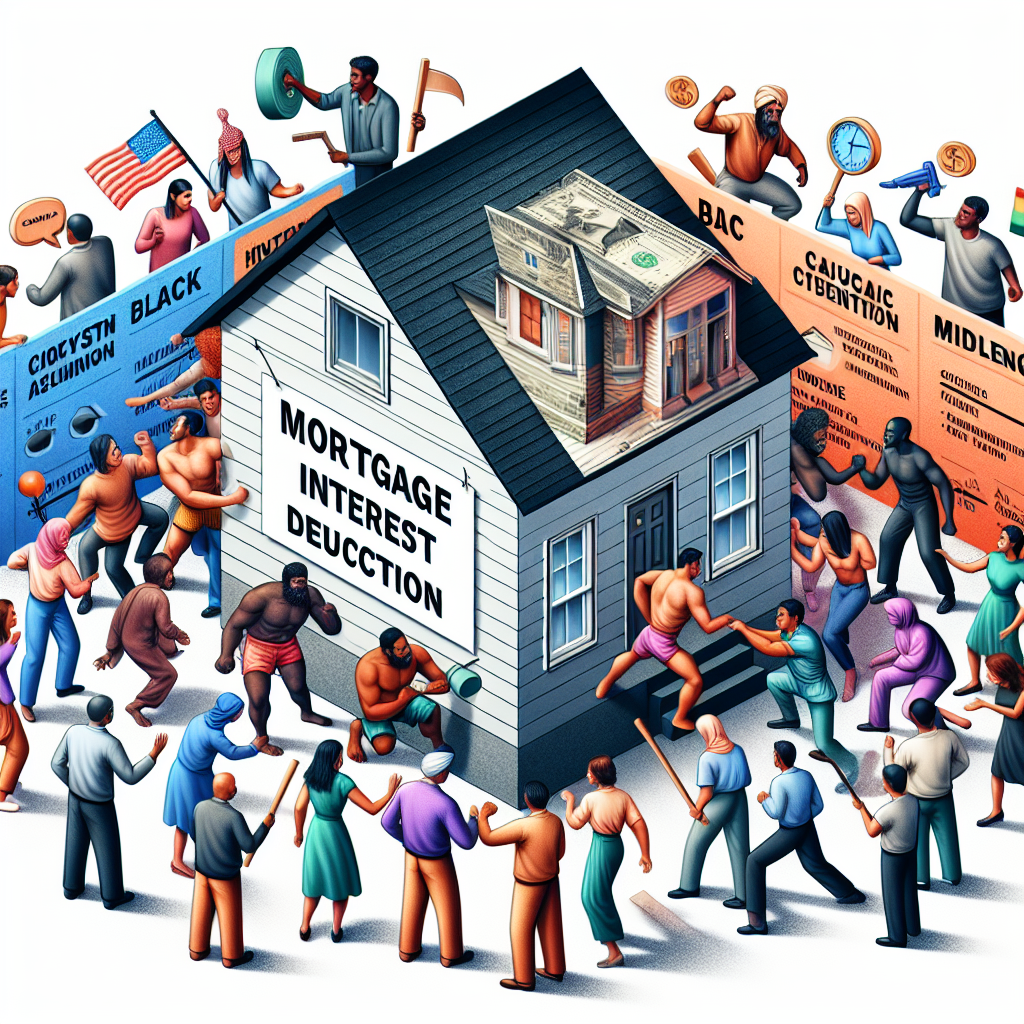-
Table of Contents
- The Overhyped Mortgage Interest Deduction: Not Worth the Battle
- Understanding the Mortgage Interest Deduction
- Eligibility Criteria
- The Disproportionate Benefits
- Case Study: The Wealthy Homeowner
- The Limited Reach of the MID
- Statistics on Itemization
- The Questionable Impact on Homeownership
- International Comparisons
- The Cost to the Federal Budget
- Opportunity Cost
- Alternative Approaches
- First-Time Homebuyer Credits
- Renter’s Tax Credit
- Expanding Affordable Housing Programs
- Conclusion
The Overhyped Mortgage Interest Deduction: Not Worth the Battle

The mortgage interest deduction (MID) has long been touted as a cornerstone of American homeownership, a tax break that supposedly makes buying a home more affordable. However, a closer examination reveals that the benefits of the MID are often overstated and disproportionately favor the wealthy. This article delves into the intricacies of the mortgage interest deduction, scrutinizes its actual impact, and argues why it may not be worth the battle.
Understanding the Mortgage Interest Deduction
The mortgage interest deduction allows homeowners to deduct the interest paid on their mortgage from their taxable income, thereby reducing their overall tax liability. This deduction is available for mortgages on primary residences and, in some cases, second homes. The idea is that by lowering the cost of borrowing, the MID encourages homeownership and stimulates the housing market.
Eligibility Criteria
To qualify for the mortgage interest deduction, homeowners must meet specific criteria:
- The mortgage must be a secured debt on a qualified home.
- The homeowner must itemize their deductions on their tax return.
- The mortgage must not exceed certain limits, which have changed over time.
The Disproportionate Benefits
While the MID is often marketed as a benefit for the middle class, the reality is that it disproportionately benefits higher-income households. According to the Tax Policy Center, nearly 75% of the benefits of the MID go to the top 20% of earners. This is because higher-income individuals are more likely to itemize their deductions and have larger mortgages, resulting in more significant tax savings.
Case Study: The Wealthy Homeowner
Consider a wealthy homeowner with a $1 million mortgage at an interest rate of 4%. This homeowner would pay $40,000 in interest annually. If they are in the 37% tax bracket, they could potentially save $14,800 in taxes due to the MID. In contrast, a middle-class homeowner with a $200,000 mortgage at the same interest rate would pay $8,000 in interest annually. If they are in the 22% tax bracket, their tax savings would be only $1,760. The disparity is evident.
The Limited Reach of the MID
Another critical issue with the mortgage interest deduction is its limited reach. According to the IRS, only about 30% of taxpayers itemize their deductions, meaning that the vast majority of homeowners do not benefit from the MID. The standard deduction, which was significantly increased by the Tax Cuts and Jobs Act of 2017, further reduces the number of taxpayers who find it advantageous to itemize.
Statistics on Itemization
Data from the IRS shows that in 2018, only 10.9% of taxpayers claimed the mortgage interest deduction, down from 21.5% in 2017. This decline is primarily due to the increased standard deduction, which makes itemizing less attractive for many taxpayers.
The Questionable Impact on Homeownership
One of the primary arguments in favor of the mortgage interest deduction is that it promotes homeownership. However, research suggests that the MID has a minimal impact on homeownership rates. A study by the National Bureau of Economic Research found that eliminating the MID would have little effect on the overall homeownership rate, as the primary beneficiaries are higher-income households who are likely to buy homes regardless of the tax incentive.
International Comparisons
Looking at international examples, countries like Canada and Australia do not offer a mortgage interest deduction, yet they have comparable or even higher homeownership rates than the United States. This suggests that other factors, such as economic conditions and housing policies, play a more significant role in influencing homeownership.
The Cost to the Federal Budget
The mortgage interest deduction is one of the most expensive tax expenditures in the federal budget. According to the Joint Committee on Taxation, the MID is projected to cost the federal government approximately $25 billion annually. This substantial cost raises questions about the efficiency and fairness of the deduction, especially when considering its limited reach and disproportionate benefits.
Opportunity Cost
The funds allocated to the mortgage interest deduction could be used for other purposes that might have a more significant impact on housing affordability and economic equity. For example, increasing funding for affordable housing programs or providing direct subsidies to low-income renters could address housing needs more effectively.
Alternative Approaches
Given the limitations and inequities of the mortgage interest deduction, several alternative approaches could be considered to promote homeownership and housing affordability more effectively.
First-Time Homebuyer Credits
One alternative is to offer targeted tax credits for first-time homebuyers. These credits could provide direct financial assistance to those who need it most, helping to make homeownership more accessible for lower- and middle-income families.
Renter’s Tax Credit
Another approach is to introduce a renter’s tax credit, which would provide financial relief to renters and help address the affordability crisis in the rental market. This could be particularly beneficial in high-cost urban areas where renting is often the only viable option for many households.
Expanding Affordable Housing Programs
Investing in affordable housing programs, such as the Low-Income Housing Tax Credit (LIHTC) and Housing Choice Vouchers, could also help address housing needs more effectively. These programs have a proven track record of providing affordable housing options for low-income families and could be expanded to reach more households.
Conclusion
The mortgage interest deduction has long been championed as a vital tool for promoting homeownership and making housing more affordable. However, a closer examination reveals that the benefits of the MID are often overstated and disproportionately favor higher-income households. With only a small percentage of taxpayers benefiting from the deduction and its questionable impact on homeownership rates, it is time to reconsider its value.
Instead of clinging to an overhyped and inequitable tax break, policymakers should explore alternative approaches that more effectively address housing affordability and promote economic equity. By reallocating resources to targeted tax credits, renter’s relief, and affordable housing programs, we can create a more inclusive and fair housing market that benefits all Americans, not just the wealthy few.
In summary, the mortgage interest deduction may not be worth the battle. Its limited reach, disproportionate benefits, and high cost to the federal budget make it an inefficient and inequitable policy. By shifting our focus to more targeted and effective solutions, we can better address the housing needs of all Americans and create a more just and equitable society.








